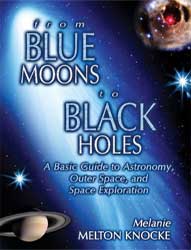
Glow in the Dark Planets is exactly what you’d expect. In nineteen pages, each planet of our system gets a one or two page spread of neat pictures, funky fonts and many factoids. An early reader would have no problem digesting the information on their own. But with two together, one asking questions from the front seat while the other in the back seat scurries to find answers, a neat game of Did-you-know can be had. For example, with Venus, did you know one of its mountain’s names is Danu Montes. Also, surface temperature, atmosphere and relevant space probes entice a young mind to stretch out past the limits of their vision.
Of course, the main draw for this book is the centerfold. More than twenty groovy stickers can be removed and placed anywhere; a car’s interior, inside a tent’s wall, or on your sibling’s nose. These easy to peel and re-arrange stickers depict each planet, some comets, the moon and shiny stars. Glow in the Dark Planets is a short book but it might be just the lifesaver for one too many hours in a car.
The second book, From Blue Moons to Black Holes is just as good for shortening a journey. However, it’s really a questions and answer book with a few pictures, some diagrams and lots of information. For all those really neat space questions you’ve been dying to ask, each have answers. You can test your knowledge by comparing your answers or become a rocket scientist by memorizing the given answers. Either way there’s lots to learn.
For each question, the answer comes in two parts. First there is a short yes, no or one line response. This is fabulous for those seeking answers without explanation. Following this there is an excellent discussion surrounding the question. This discussion usually tries to draw a corollary to something readily known on Earth. For example, in answering the question, ‘Could we see lunar colonies?”, the short answer is ‘Perhaps but only with a telescope.’ The discussion then goes on to note that seeing a man made object on the moon would need the object to be much bigger than the city of Los Angeles.
The answers themselves are short, to the point and stand well on their own. Where appropriate, they are linked by references to other answers. Some are opinionated, and biassed for space exploration. For example, the answer to “Should We Travel to Mars?” is a resounding Yes!
To compliment the question and answer section there is some standard astronomy fare. A section on telescope identification, selection and usage helps a reader make the step into aided astronomy. Data on the planets, their moons and eclipses also are present for an easy reference. Perhaps what may not be to everyone’s interest is a section listing every mission to our moon as well as to the other planets. However this would perfectly satisfy the trivia buff.
One other significant selling feature of From Blue Moons to Black Holes is the size (28x22cm), large font and lots of margin space. This makes for very easy reading and more importantly easy notation for adding more or updating existing information.
This summer, don’t let a long drive do you in. Nor let a perfect night’s star watching make you feel somehow out-of-it. Get some good fun astronomy books like John Starke’s Glow in the Dark Planets or a wonderful reference like Melanie Melton Knocke’s From Blue Moons to Black Holes to keep times fun and interesting.
Review by Mark Mortimer
